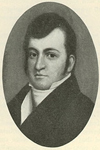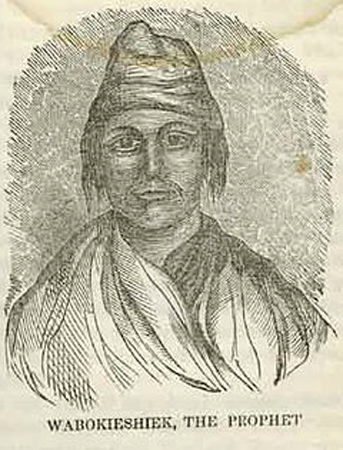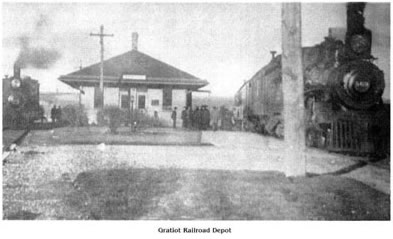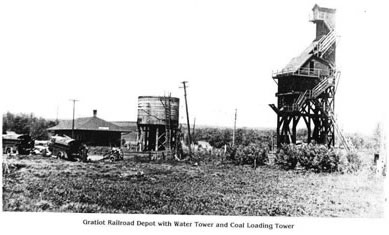Welcome to
The Village of Gratiot, WI
Located on Hwy. 11 and Rt. 78 in Southwest Wisconsin

|
Note: If you're a history buff, or just want to know even more about the interesting facts on this page, just click on a blue highlighted word to learn more.
INTERESTING FACTS

|
Abner Frank Dalrymple (September 9, 1857 – January 25, 1939) was an American left fielder in Major League Baseball who hit 43 home runs (including 22 in 1884, the second-highest total to that date) and batted .288 during his 12-season career spent primarily with the Chicago White Stockings, for whom he starred as the leadoff hitter on five National League pennant winners. Born in Gratiot, Wisconsin, he played for the Milwaukee Grays, White Stockings, Pittsburgh Alleghenys, and Milwaukee Brewers.
In 1881, he was given an intentional walk with the bases loaded; the first batter to accomplish that honor. In 1884, he catapulted into sixth place on the all-time home run list. On the strength of 11 HR for the 1885 champions, he moved up one place; his power threat made him the first hitter to be intentionally walked with the bases loaded. He hit just 3 home runs the next two years, however, and he held 10th on the all-time list. He fell from the top ten the next year.
Dalrymple died in Warren, Illinois at age 81. |
 |
Colonel Henry Gratiot (April 25, 1789 – Apil 27, 1836) was a French-American pioneer, trader and businessman who, during the Winnebago and Black Hawk Wars, acted as both an intermediary and early U.S. Indian agent to the Winnebagos throughout the early 19th century.[1] He and his brother Jean Pierre, were the first pioneers to settle in Wisconsin operating a successful mining and smelting business during the 1820s and 1830s. Both the present-day Village of Gratiot, Wisconsin and the town of Gratiot (town), Wisconsin are named in his honor.[2]
The second eldest son of Illinois pioneer Charles Gratiot, Sr. and Victoire Chouteau, Henry Gratiot was born in St. Louis, Missouri. He became engaged to Susan Hempstead, only two years after her family arrived from Connecticut, and the two eventually married on June 21, 1813. The youngest daughter of Revolutionary War soldier Stephen Hempstead, her brothers included Edward Hempstead, the first congressional delegate for the Missouri Territory, as well as prominent lawyer Charles S. Hempstead and businessman William Hempstead. He and his wife would live at a small farm and mill west of St. Louis for the next several years.[3] |
In October 1825, following the admission of Missouri as a slave state, the 36-year-old Gratiot moved his family to the Fever River lead mines region (present-day Galena, Illinois) due to his opposition to slavery and his wish to raise his family in a free state. With the discovery of lead ore in the region in 1826, he and his younger brother Jean Pierre Bugnion Gratiot became interested in the mineral lands of present-day Shullsburg, Wisconsin. Purchasing the right to mine the area from the local Winnebagos, he and his brother were the first to develop a successful mining and smelting operation at Gratiot's Grove in what is now Lafayette County, Wisconsin. Employing sixty Frenchmen and using six furnaces,[4] the brothers would undertake nearly all smelting for the entire region for several years.[5]
Association with the Winnebagos
During this time, he and his wife became friendly with the local Winnebagos visiting them during the winter of 1826-27. They eventually befriended a mixed-blood woman, Catharine Mayotte, who had doctored Susan Gratiot for a time and with whom they exchanged gifts and information. Developing a close friendship, the three would remain in contact between 1827 and 1835. The Winnebago Prophet as well spoke highly of Henry Gratiot who "..came as a 'Chouteau' ... welcome[d] him to his village; but if he came as a white man he must consider him, like all white men, an enemy." [6]
Although warned by the Winnebagos before their uprising against the United States the following summer, Gratiot allowed American forces in 1827 to build a stockade at Gratiot's Grove later renamed Fort Gratiot by the Americans. The women and children in the surrounding area were escorted from the fort to Galena and then to St. Louis.[6]
After their defeat, the Winnebago left the area in droves although a few remained for a while longer to trade with arriving American settlers. Appointed a subagent for the Winnebago in 1830, he traveled father into the Wisconsin wilderness to negotiate annuity payments on behalf of the U.S. government. He would also be present at the signing of several treaties between the Winnebago and the United States[7][8] and was later appointed an official Indian subagent to the Winnebago for the region south of Prairie du Chien in March 1831.[9] |
 |
Black Hawk War
During the Black Hawk War, he exerted his influence with the Winnebago acting as an intermediary in his efforts to negotiate peace and maintain stability in the region. Journeying to Prophet's Town in early-1832, he stayed with Black Hawk from April 25-27; however, Black Hawk refused to hear the message he had been given from General Henry Atkinson.[10]
He did, however, side with the U.S. authorities in securing the release of American hostages and prisoners as seen when working with Chief Wabaunsee and members the Winnebago to negotiate the release of Indian Creek Massacre survivors Rachel and Sylvia Hall as, on May 25, 1832, he and Colonel Henry Dodge held council with the Winnebago as to their position in the war to which the Winnebago gave their assurance of fidelity in the conflict "though little reliance was placed on their sincerity." [11] During this meeting, he sent Winnebago chieftain White Crow to Black Hawk's camp purchasing their freedom in exchange for horses and various trinkets valued at $2,000. The young women were later delivered to Gratiot at Blue Mounds Fort on June 3.[11]
He was later called on by General Edmund P. Gaines to investigate the rumors that the Winnebagos under the Winnebago Prophet, along with the Kickapoos and the Potawatomis, were attempting to join up with Black Hawk's British Band after being invited to join their ranks. Finding the Winnebago Prophet and several of his followers at Saukenuk, he persuaded them to return to their village. The Prophet did not remain at his lodge for long and resumed recruiting for Black Hawk in Winnebago villages upriver, however he was ultimately unsuccessful in this venture.[12] The activities of the Rock River Winnebagos during the war, including several speeches by several prominent Winnebagos, were recorded by Gratiot in his personal diary.[13]
Later years
Despite his efforts, relations between the United States and the Winnebago rapidly deteriorated following the end of the Black Hawk War. As American settlement of the territory continued, the native and mixed-blood population near Gratiot's Grove as well as in the areas of Galena and Dubuque had become deserted by 1833 with exception to "a few straggling Winnebagos who lingered in the country." [6]
He resigned his position as an Indian agent the following year and, closing his mining business, he bought a section of land in which he built a small house outside of Gratiot's Grove to retire as a gentleman farmer. He and his wife still continued their friendship with the Winnebago who made visits to their home every autumn camping under the pine trees near their new home.[6]
During the fall of 1835, four chieftains representing the remaining bands from Rock River to Gratiot's Grove met with Gratiot to discuss the payments of annuities which had ceased "by some bad management" [6] and had left the "Indains [sic] on Rock River ... are allmost [sic] starved and naked." [6] Gratiot then proceeded to travel to St. Louis to acquire the necessary signatures and documentation for the Rock River Winnebagos to receive payments from General Henry Atkinson before preparing to leave for Washington, D.C. in early 1836 to clear up the matter.[6]
However, by the time he was ready to leave for the capital, few Winnebagos lived near his residence and within a year the federal government began favoring their removal. While visiting the capital, he contracted a severe cold which grew worse when he attempted to travel back to Wisconsin. By the time he reached Baltimore, Maryland, he had become too ill to continue and forced to stop in Barnum's Hotel. However, his condition grew worse and died at the hotel on April 27, 1836. At the time of his death, he had been attended by his brother General Charles Gratiot, General George W. Jones, Captain Henry A. Thompson and Chief Justice Roger B. Taney among others. [14]
Of his four children, two of his sons Charles and Edward Gratiot both had distinguished careers in the US Army, the latter serving as a volunteer US Army paymaster. His only surviving daughter became the wife of Congressman Elihu Benjamin Washburne,[15] who later published his biography Henry Gratiot, a Pioneer of Wisconsin (1884) based on speeches Washburne had delivered to the State Historical Society of Wisconsin during the early 1880s. Among his historical publications, this was considered his finest work.[16]
References
- ^ "Henry Gratiot (1789-1836)". Dictionary of Wisconsin History. Wisconsin State Historical Society. 1996.
- ^ Wisconsin Writers Program. Wisconsin: A Guide to the Badger State. New York: Duell, Sloan and Pierce, 1941. (pg. 557) ISBN 0403021987
- ^ The Bulletin of the Missouri Historical Society. St. Louis: Missouri Historical Society, 1956. (pg. 30-32)
- ^ American Philatelic Association. The American Philatelist. Altoona, Pennsylvania: American Philatelic Society, Inc., 1887. (pg. 401) ISBN 0003-0473
- ^ Reynolds, John. The Pioneer History of Illinois: Containing the Discovery, in 1673, and the History of the Country to the Year 1818. Belleville, Illinois: N.A. Randall, 1852. (pg. 309)
- ^ a b c d e f g Mahoney, Timothy R. Provincial Lives: Middle-Class Experience in the Antebellum Middle West. New York: Cambridge University Press, 1999. (pg. 57-59) ISBN 0-521-64092-X
- ^ Peters, Richard, ed. Treaties Between the United States and the Indian Tribes. Vol. VII. Boston: Charles C. Little and James Brown, 1848. (pg. 317, 322, 325, 438)
- ^ Fay, George E., ed. Treaties Between the Potawatomi Tribe of Indians and the United States of America, 1789-1867. Greely, Colorado: University of Northern Colorado, 1971. (pg. 104)
- ^ Trask, Kerry A. Black Hawk: The Battle for the Heart of America. New York: Henry Holt & Co., 2006. (pg. 104-105) ISBN 0-8050-7758-8
- ^ Thwaites, Reuben Gold. How George Rogers Clark Won the Northwest: And Other Essays in Western History. Chicago: A.C. McClerg & Co., 1903. (pg. 144) ISBN 1-4286-0207-0
- ^ a b Wisconsin Archeological Society. The Wisconsin Archeologist. Vol. 6. Madison, Wisconsin: Democrat Printing Company, 1906. 1 vols. (pg. 153-154)
- ^ William Thomas, Hagen. The Sac and Fox Indians. Lincoln: University of Oklahoma Press, 1958. (pg. 129) ISBN 0-8061-2138-6
- ^ Hubach, Robert Rogers. Early Midwestern Travel Narratives: An Annotated Bibliography, 1634-1850. Detroit: Wayne State University Press, 1998. (pg. 72) ISBN 0-8143-2809-1
- ^ Washburne, Elihu B. "Henry Gratiot, a Pioneer of Wisconsin," Report and Collections of the State Historical Society of Wisconsin, for the years 1883, 1884, 1885, vol. 10 (Madison: The State Historical Society of Wisconsin, 1888): 257.
- ^ The History of Jo Daviess County, Illinois: Containing a History of the County - Its Cities, Towns, Etc. Chicago: H.F. Kett & Co., 1878. (pg. 634) ISBN 0548836361
- ^ Hunt, Gaillard. Israel, Elihu and Cadwallader Washburn: A Chapter in American Biography. New York: Macmillan, 1925. (pg. 287) ISBN 0-8369-5985-X
Further reading
• American Historical Society. Prominent Americans of Swiss Origin: A Compilation Prepared by the Swiss. New York: James T. White & Co., 1932.
• Wakefield, John Allen and Frank Everett Stevens. Wakefield's History of the Black Hawk War: A Reprint of the 1st Edition. Chicago: Caxton Club, 1908.
Black Hawk War (1832)
GRATIOT DEPOT
During its heyday, the Gratiot Depot was a major junction for four area rail lines.
As a Milwaukee Road Junction point, it was equipped with water and coaling towers, essential for refueling locomotives.
Gratiot's significance declined after the Shullsburg branch was abandoned in the mid 1950's. |
 |

|
 |
|
|